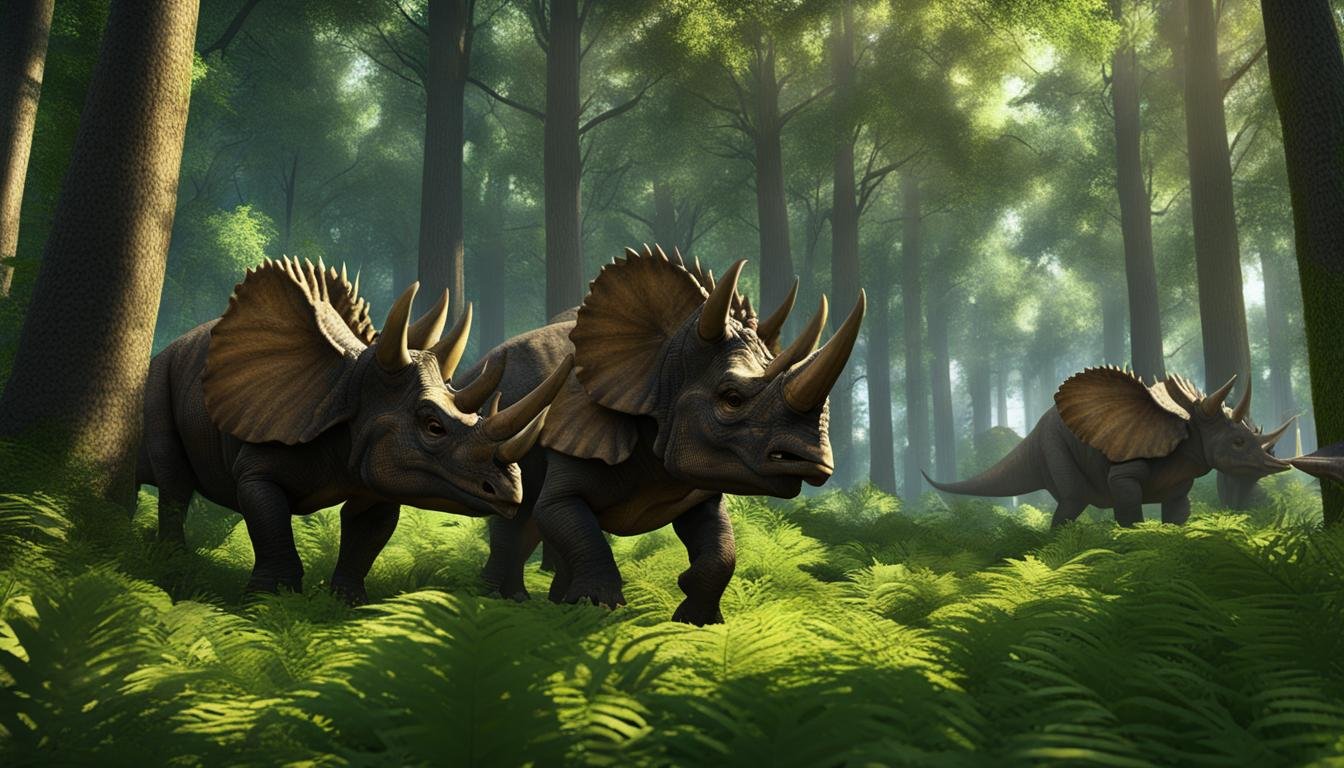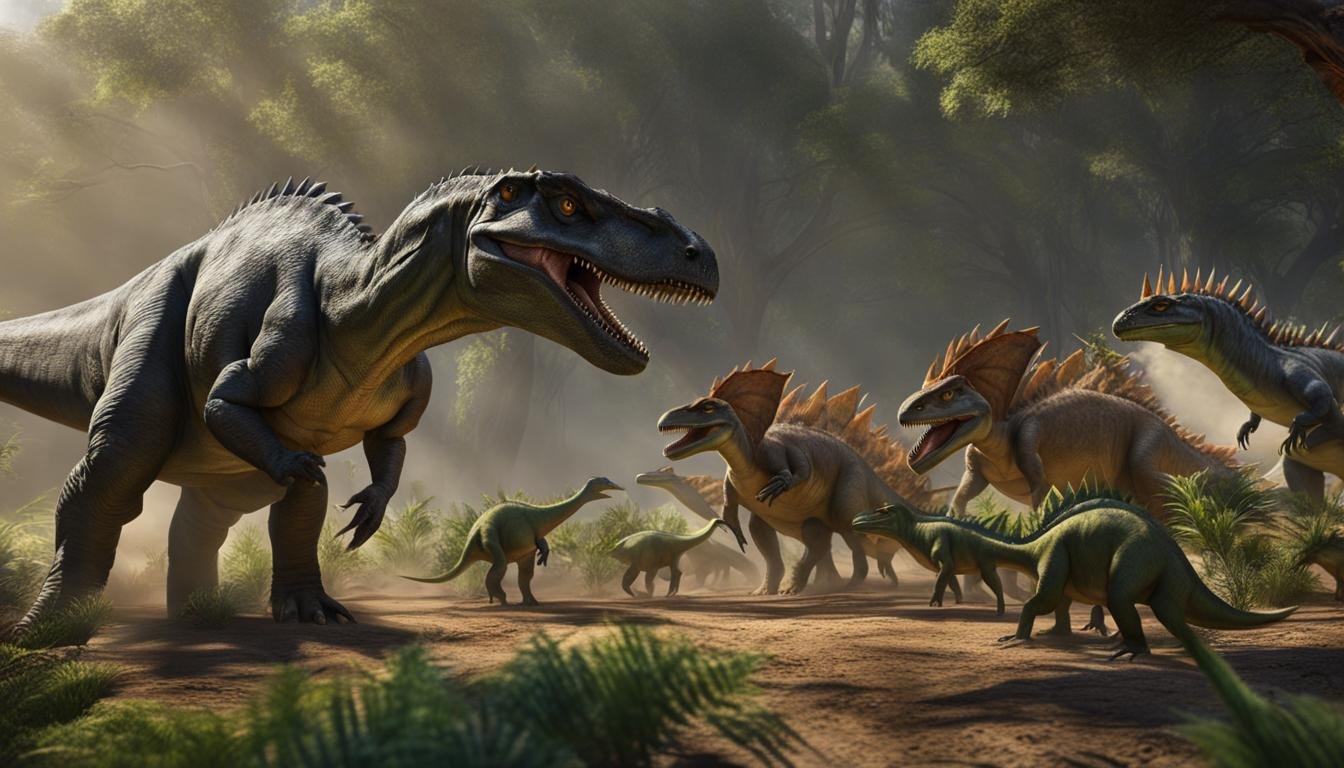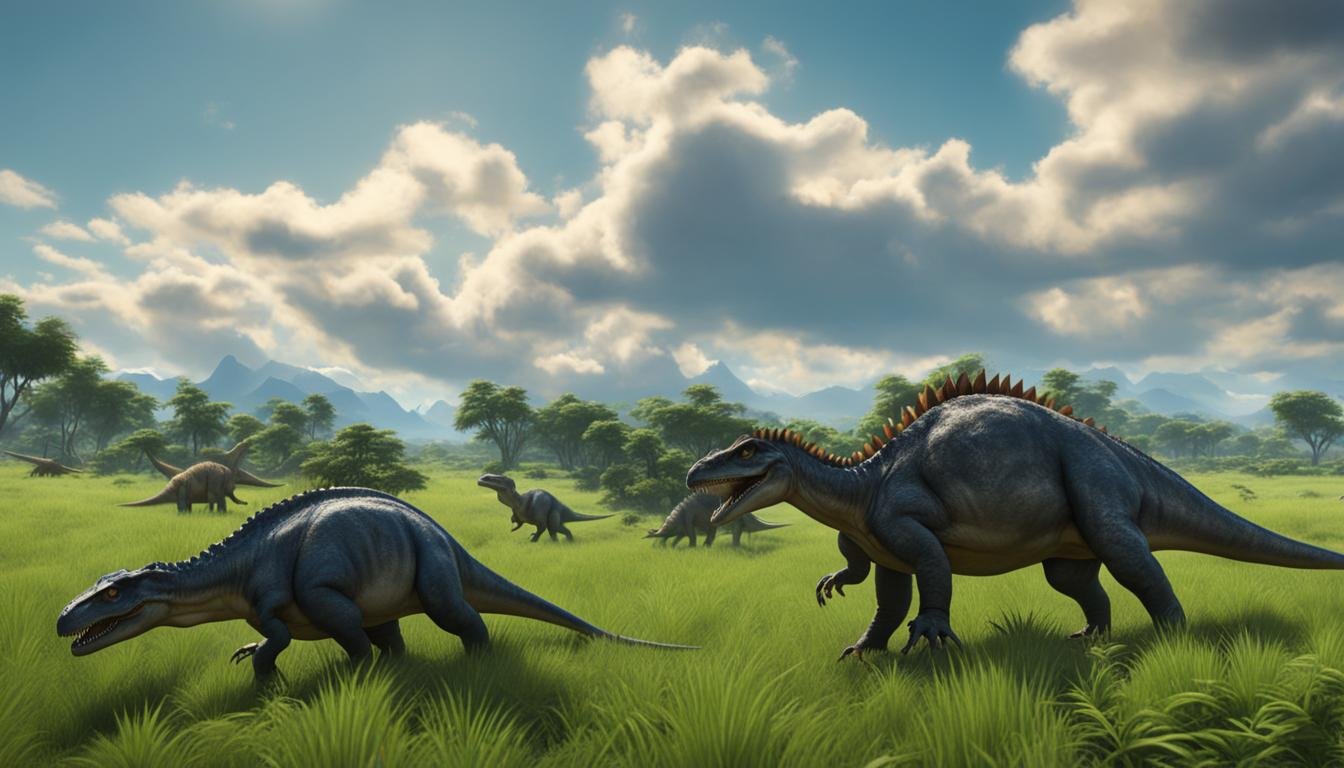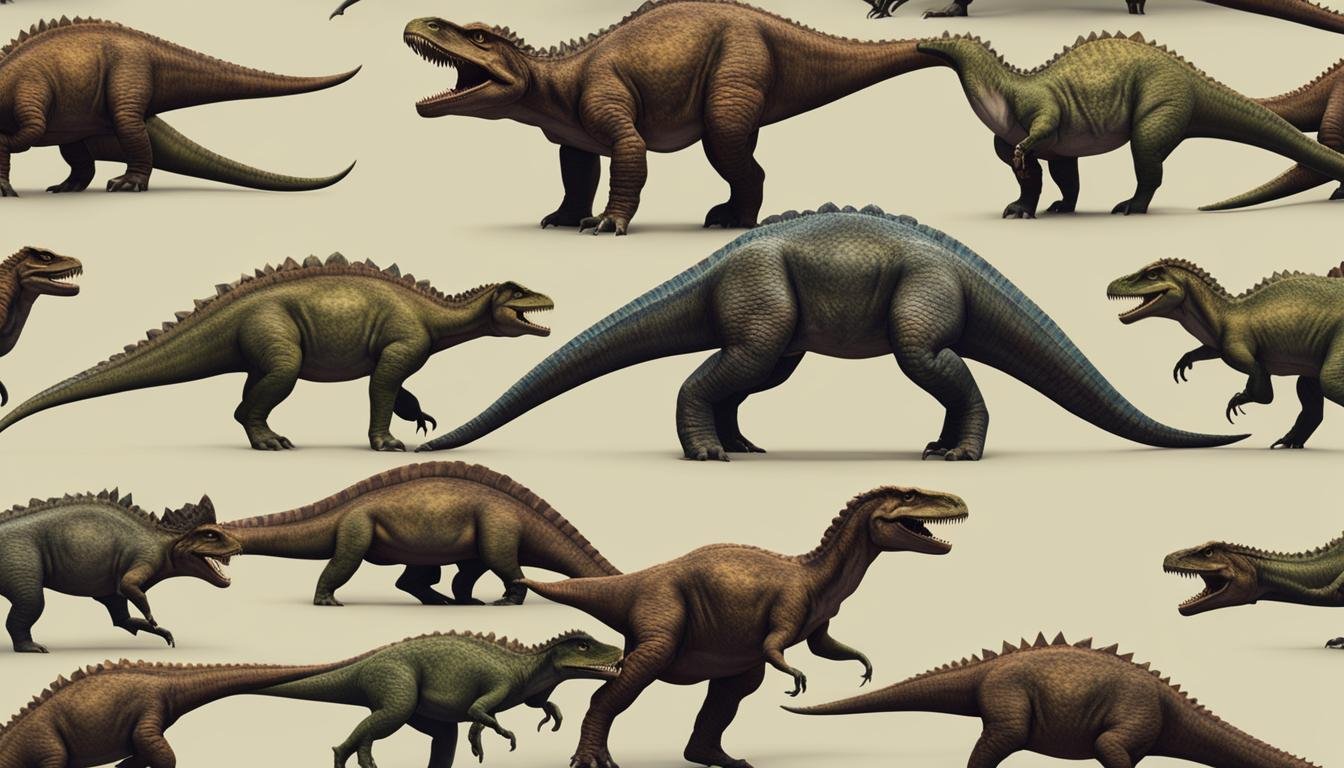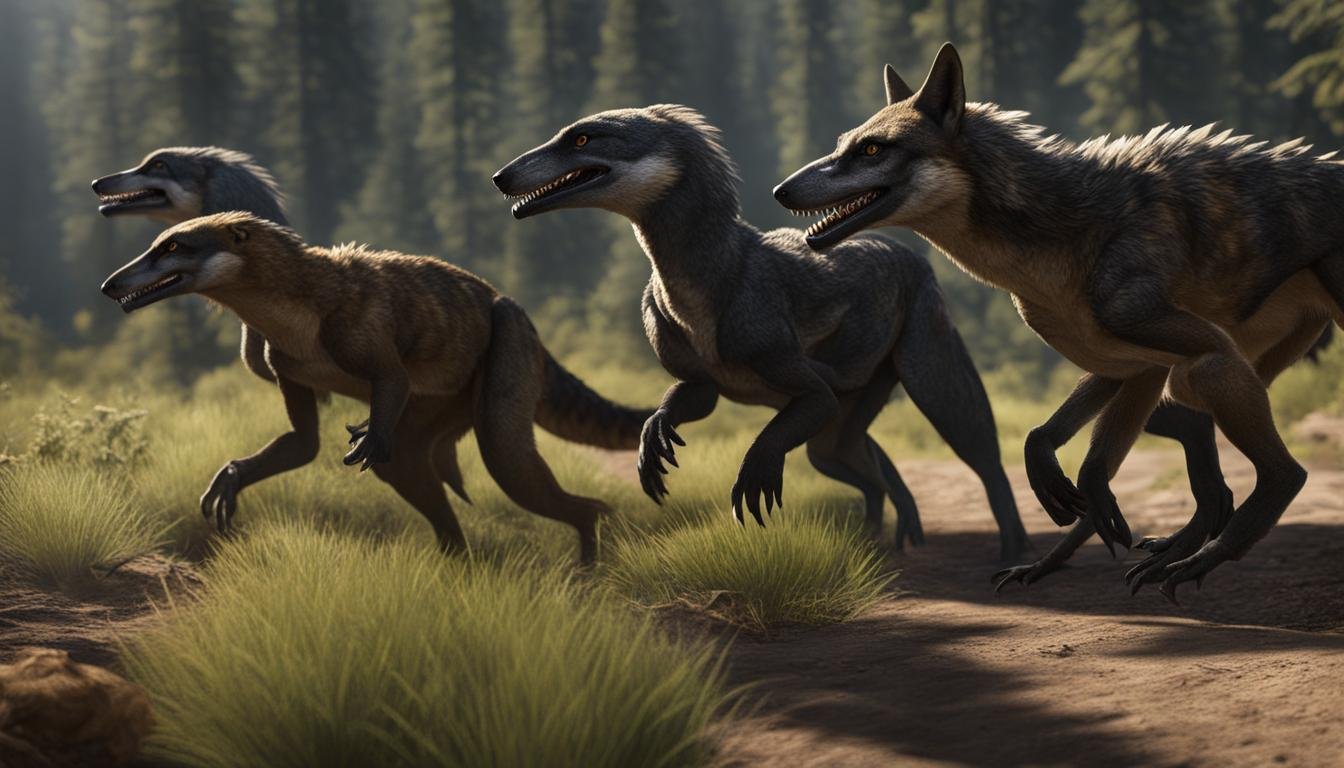Dinosaurs, the ancient giants that once roamed the Earth, were not static creatures. Fossil records and paleontological evidence indicate that they engaged in migration and group movements during the Mesozoic era, between 230 and 66 million years ago.
Using network theory, researchers have mapped the migration patterns of various dinosaur groups across continents. While the breakup of the supercontinent Pangea led to the isolation of some land masses, dinosaurs still managed to move between major continental land masses. The data also suggests that temporary land bridges and fluctuating sea levels may have facilitated their movements.
The study of dinosaur migration provides insight into their behavioral ecology, group dynamics, and response to environmental triggers such as seasonal habitat changes and climate change.
| Key Takeaway | Detail |
|---|---|
| Dinosaur Migration | Dinosaurs were engaged in migration and group movements throughout the Mesozoic era. |
| Network Theory in Research | Researchers have utilized network theory to map the migration patterns of various dinosaur groups. |
| Role of Land Bridges and Sea Levels | Temporary land bridges and changes in sea levels may have facilitated the movement of dinosaurs across regions. |
| Behavioral Ecology Insights | Studying dinosaur migration offers insights into their behavioral ecology and how they responded to environmental changes. |
| Influence of Climate and Habitat | Climate change and seasonal changes in habitat played significant roles in shaping the migration patterns of dinosaurs. |
Mapping Dinosaur Migration
By applying network theory to the study of dinosaur fossils, researchers have been able to create a visual map of dinosaur migration during the Mesozoic era. This innovative approach involves connecting continents as points and drawing lines between them when the same types of dinosaurs are found on two or more continents. The resulting analysis reveals the connectivity and strength of the connection between dinosaur groups over time.
Through the study of migration routes and distances traveled, paleontologists gain valuable insights into the movements and behaviors of dinosaurs. The application of network theory enables researchers to identify the paths taken by different dinosaur groups, providing a clearer understanding of their territorial ranges and the environments they traversed.
The Importance of Connectivity and Continental Displacement
One of the key findings of this research is that even as the supercontinent Pangea broke up and continents drifted apart, dinosaurs persisted in migrating between major land masses. This suggests that temporary land bridges and fluctuating sea levels played a crucial role in facilitating the movements of different dinosaur groups.
| Migration Routes | Connectivity | Migration Distance |
|---|---|---|
| North America to Asia | Strong | Long-distance |
| Africa to Europe | Moderate | Short-distance |
| South America to Antarctica | Weak | Limited |
“Using network theory to analyze dinosaur migration patterns has revolutionized our understanding of how these ancient creatures moved across continents. The visual insights provided by network maps help us grasp the connectivity and territorial ranges of different dinosaur groups, shedding light on their evolutionary success.”
Overall, the application of network theory to the study of dinosaur migration has revealed fascinating patterns and insights into the movements of these prehistoric creatures. By leveraging fossil data, connectivity analysis, and migration routes, researchers have been able to uncover the complexities of dinosaur migration during the Mesozoic era and gain a deeper understanding of their territorial ranges and environmental triggers.
Understanding the Mechanics of Dinosaur Migration
Dinosaur migration was a complex phenomenon influenced by various factors, including the size and mobility of different dinosaur groups. The study found that sauropodomorphs, characterized by their large bodies and long necks, exhibited less mobility compared to theropods and ornithischians.
Sauropodomorphs, such as Brachiosaurus and Diplodocus, were massive herbivores that relied on vegetation for sustenance. Their colossal size, while advantageous for reaching high foliage, posed limitations when it came to crossing bodies of water. Their large bodies made swimming or traversing sea waves challenging, which may have restricted their ability to migrate between land masses.
In contrast, theropods, which include iconic dinosaurs like Tyrannosaurus rex and Velociraptor, were smaller and more agile predators. Their streamlined bodies and potential swimming abilities likely facilitated their mobility, allowing them to cross bodies of water and reach new territories during migration.
“The study’s findings highlight the importance of size and mobility in understanding dinosaur migration patterns. The contrasting capabilities of sauropodomorphs and theropods provide valuable insights into the behaviors and physical adaptations of different dinosaur groups during their movements.”
These observations are supported by the analysis of the fossil record, where the presence of certain dinosaur trackways suggests their ability to migrate over long distances. Furthermore, the paleontological evidence also reveals the varied strategies employed by different dinosaur groups to adapt and survive in a changing environment.
Comparison of Dinosaur Migration Mobility
| Dinosaur Group | Migration Mobility | Swimming Abilities |
|---|---|---|
| Sauropodomorphs | Less mobile | Limited |
| Theropods | More mobile | Potential swimming abilities |
| Ornithischians | Varies by species | Varies by species |
The table above summarizes the mobility and swimming abilities of different dinosaur groups during migration. While sauropodomorphs were less mobile and had limited swimming capabilities, theropods were more mobile and potentially better equipped for crossing bodies of water. The migration patterns and abilities of ornithischians, a diverse group that includes herbivorous dinosaurs like Triceratops and Stegosaurus, varied among species.
By examining the mechanics of dinosaur migration, researchers gain valuable insights into the behaviors, adaptations, and ecological dynamics of these ancient creatures. The study of size-related mobility and swimming abilities provides a deeper understanding of how different dinosaur groups navigated and thrived in their prehistoric world.
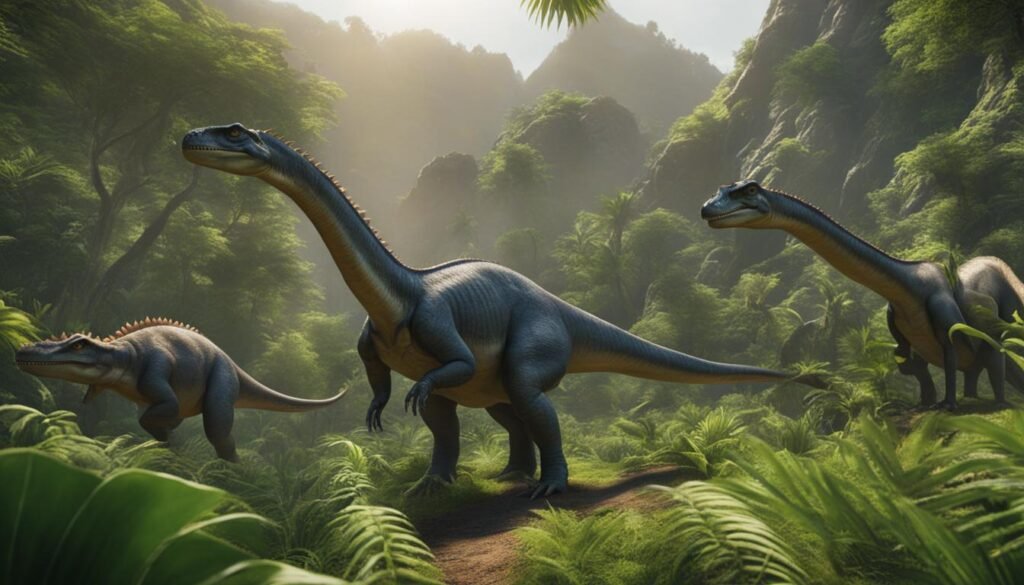
Environmental Triggers and Resource Seeking
Dinosaur migration was a complex phenomenon driven by various environmental triggers and the need to seek resources such as food and water. Seasonal movement, particularly in response to changes in resource availability, was a common behavior observed among dinosaur groups during the Mesozoic era. Some dinosaurs engaged in mass migrations, traveling long distances in search of suitable feeding grounds. Paleontological evidence supports the hypothesis that fluctuations in climate, including changes in temperature and precipitation, influenced dinosaur migration patterns.
One fascinating aspect of dinosaur migration is their herding behavior. Just as modern-day animals gather in groups for protection and increased chances of survival, dinosaurs exhibited the same behavior. Herding provided advantages such as increased defense against predators and improved resource acquisition. The study of fossilized trackways and paleontological evidence has provided valuable insights into the social dynamics and group behavior of migrating dinosaur herds. These findings further highlight the importance of resource-seeking as a driving force behind dinosaur migration.
In addition to seasonal movement and resource seeking, the impact of climate change cannot be overlooked in understanding dinosaur migration patterns. Fluctuations in Earth’s climate during the Mesozoic era had profound effects on the distribution of resources and habitats. As environments changed, dinosaurs adapted by moving to more favorable areas. The analysis of migration routes and the study of paleontological evidence allow researchers to unravel the impacts of climate change on dinosaur populations and their survival strategies.
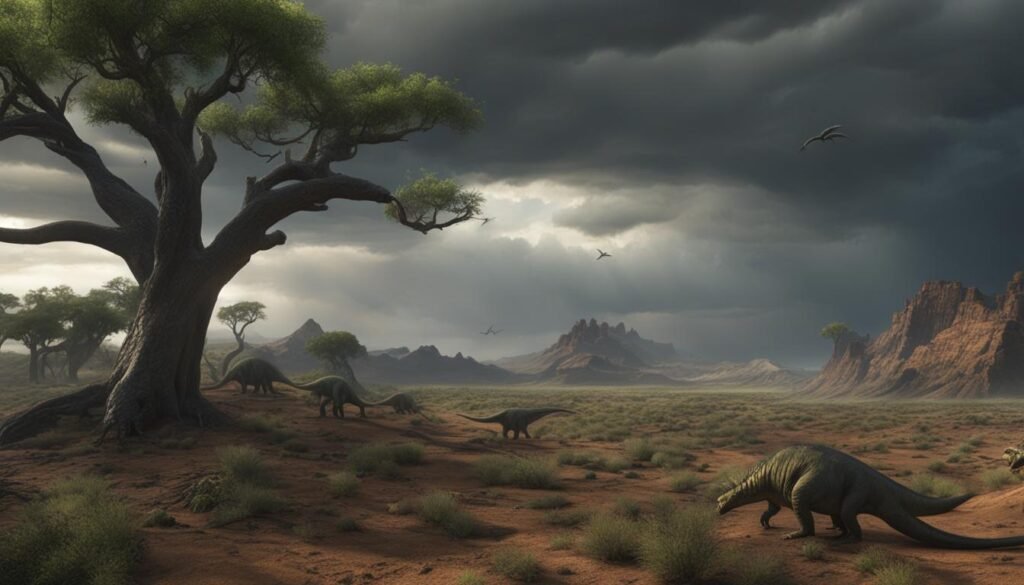
The Influence of Climate Change on Dinosaur Migration
“Climate change played a significant role in shaping dinosaur migration patterns,” says Dr. Jane Thompson, a paleontologist specializing in dinosaur ecology.
“As temperatures and precipitation levels fluctuated, dinosaurs had to adapt by moving to regions that could better support their needs. This is evident in the fossil record, where we can trace the movement of different dinosaur groups across time and space.”
Climate change may have forced certain dinosaur species to migrate over long distances or to shift their habitats in response to changing climatic conditions.
The study of dinosaur migration not only provides insights into the behavior and adaptations of these ancient creatures but also helps us understand how they navigated and responded to the dynamic world around them. By analyzing paleontological evidence and studying the environmental triggers that influenced migration, scientists are uncovering the fascinating stories of these prehistoric travelers.
Paleobiogeography and the Implications for Dinosaur Migration
Paleobiogeography, the study of the geographic distribution of past life forms, plays a crucial role in understanding dinosaur migration. By analyzing the fossil record, researchers gain valuable insights into the movement patterns of dinosaurs across different continents and their response to continental fragmentation. Despite continents appearing to be isolated, dinosaurs were able to migrate between them, potentially utilizing temporary land bridges. However, it is important to note that the quality of the fossil record varies across regions.
In particular, Europe boasts a robust fossil record compared to other regions like Australia, Africa, and Antarctica. This disparity poses challenges in studying dinosaur migration and highlights the need for more data from these regions to fully unravel the extent of their movements. Nonetheless, the available evidence suggests that dinosaurs managed to overcome continental fragmentation and explore new territories, contributing to their geographic range and territorial ranges.
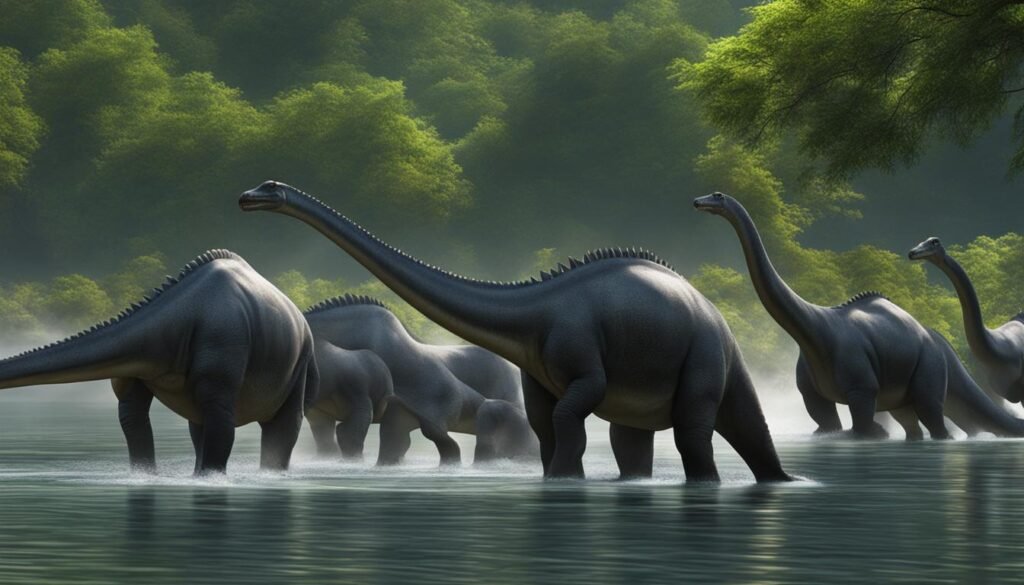
“Paleobiogeography provides valuable insights into how dinosaurs moved across the Earth, allowing us to reconstruct their migration routes and understand the effects of continental fragmentation on their movements.” – Dr. Sarah Johnson, Paleontologist
Migration routes were not limited to a single path but varied depending on the geographic location and changing landscape. The fossil record offers glimpses into how dinosaurs adapted to different environments and navigated various terrains during their journeys. Through paleobiogeography, researchers can piece together the puzzle of dinosaur migration and gain a deeper understanding of their behavior and adaptations.
| Region | Fossil Record Quality | Implications for Migration Study |
|---|---|---|
| Europe | High | Provides extensive data for studying migration patterns and environmental influences. |
| Australia | Low | Limited data hinders comprehensive understanding of migration routes and interactions with other dinosaur groups. |
| Africa | Variable | More data needed to fill gaps and connect migration routes between Africa and other continents. |
| Antarctica | Minimal | Scarcity of fossils makes it challenging to reconstruct migration patterns and understand isolation effects. |
Continued research and collaboration among paleontologists worldwide will contribute to a more comprehensive understanding of dinosaur migration. By exploring new fossil sites, filling gaps in the fossil record, and utilizing advanced analytical techniques, we can further uncover the mysteries of dinosaur movement and the role of paleobiogeography in shaping their history.
Conclusion
The study of dinosaur migration and group movements provides a fascinating glimpse into the behavior and adaptations of these ancient creatures. Through the use of network theory and analysis of the fossil record, researchers have been able to map migration patterns, study connectivity between dinosaur groups, and investigate the drivers of migration such as resource seeking and environmental triggers. The findings shed light on the ecological adaptations, group dynamics, and survival strategies of dinosaurs during the Mesozoic era.
By analyzing migration routes and the movement of dinosaur groups, researchers have uncovered valuable insights into the way these ancient creatures adapted to their changing environments. The study of dinosaur migration helps us understand how dinosaurs responded to shifts in climate, seasonal habitat changes, and the need to seek resources like food and water. It also provides insights into the different capabilities and mobility of various dinosaur groups during migration.
Further research and the integration of phylogeny in the study of dinosaur migration will continue to enhance our understanding of these magnificent creatures. By combining genetic and fossil data, scientists can unravel more about the specific evolutionary paths and connections between different dinosaur groups. This ongoing research not only deepens our knowledge of dinosaur migration but also contributes to the broader field of paleontology and our understanding of prehistoric life.

